SITE PATH
ONE POWER FEED

SUBSCRIBE
CONNECT WITH US
News Filters

Are you interested in the components being used to create the power grid of the future? Wonder how large a crane pad is? Or want to touch a wind turbine blade?
Well, the North Findlay Wind Campus was designed with our stakeholders’ curiosities in mind. Our goal is to leave our visitors with an educational and memorable experience.
Today’s Wind Views shows two of the areas used during tours of the North Findlay Wind Campus: One Energy’s headquarters and laydown yard.
We’ve created several special touches throughout our office – like project materials in the building design, multiple to-scale component and construction references, and our customers’ products to show the real life impact our projects have on everyday items.
One Energy’s laydown yard is an experience like no other. Here visitors can see the state-of-the-art components we use in our ManagedHV and Wind for Industry projects. Individuals can line up with their arms stretched out to see how many of them it takes to fit the length of a wind turbine blade. Most importantly, it’s an opportunity for visitors to ask questions they might not get answers to otherwise.


Did you plug in to last week’s Wind Study homework questions? If so, be sure to review the answers today!
We asked for your help calculating the resistance of a given cable, as well as determining which of two cables would be preferred for a certain situation.
You can check your work by downloading the answers here. And be on the lookout for next week’s assignment posted here on the feed, or on Facebook and Twitter!

As always, don’t forget to share this educational series on Facebook and Twitter!

A fall morning at the North Findlay Wind Campus, captured by drone. 🍂
The wind turbines pictured here are directly powering (and helping decarbonize) the factory shown next to them. On-site power generation is one of the services One Energy offers as an industrial power company creating the customer-centric power grid of the future.
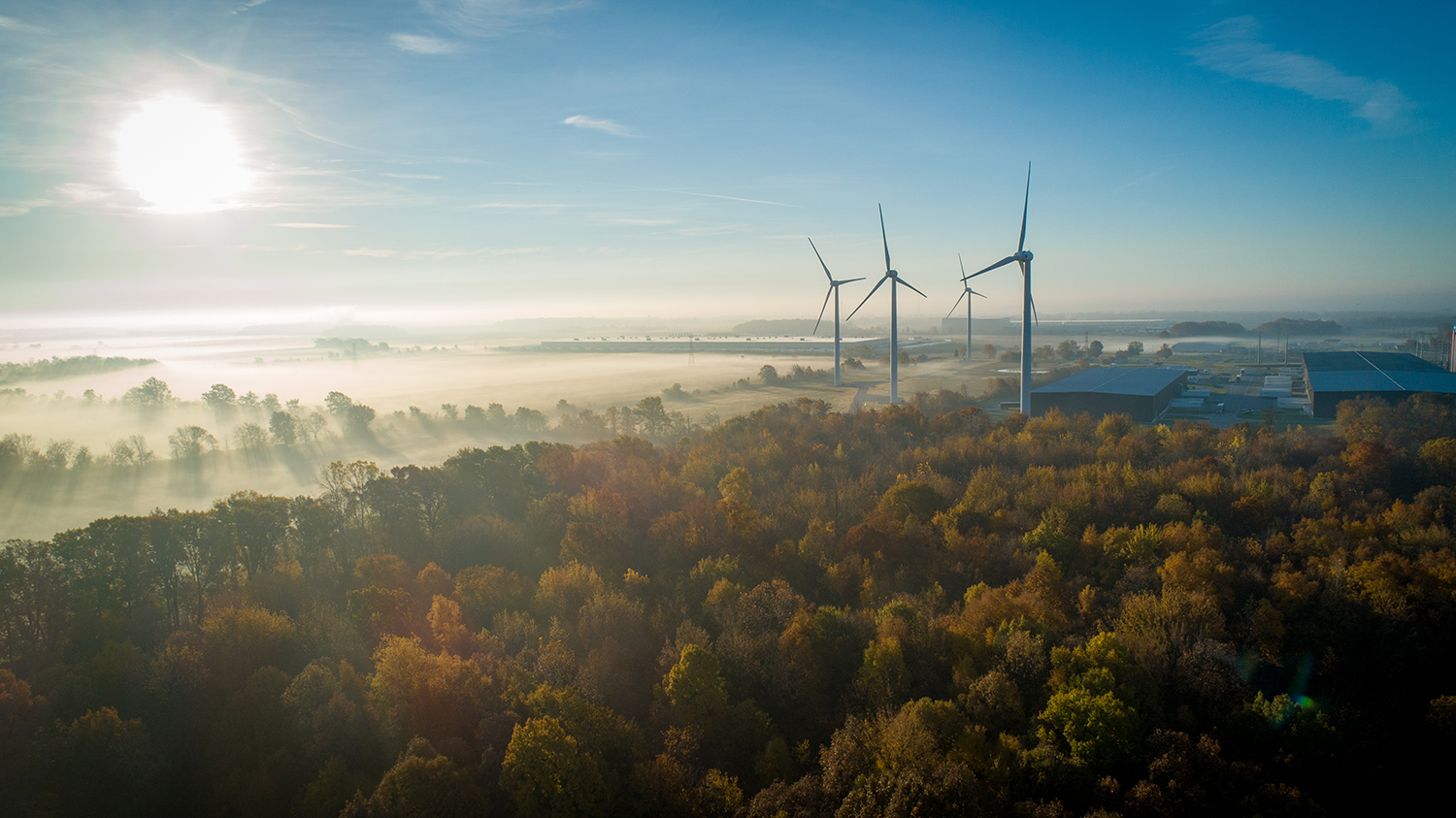

“Let me tell you a story.” That’s a sentence for which I’m famous – perhaps even infamous – with nearly everyone who has ever worked with me. It’s a sentence which is frequently met with elaborate eye rolls and people trying to make a quick exit from my office. If someone wants to poke fun at me, there’s no doubt that my storytelling is an easy target! None of that bothers me in the least, however, and no amount of eye-rolling is likely to deter me from launching into my next tale because I learned long ago that telling a story is perhaps the most effective and well-received way to convey information.
When I was quite young in my career, I was introduced to the Gestalt protocol as a means of effective communication, specifically within the context of a group of business owners. Overall, the goal of the Gestalt protocol is to create an environment which is safe and open for each person in the group to share without anyone becoming defensive. It has been, without a doubt, one of the most valuable skills I have ever acquired. Of course, the same tactics work in one-on-one conversations as well and can certainly be used outside business settings. (Parenting and marriages come rapidly to mind!) There are half a dozen components to the Gestalt protocol, all of which are well worth mastering, but my favorite is “Speak from experience.” Really, what is experience except your own story?
The vast majority of people are inherently resistant to advice – and part of that resistance is completely legitimate: no one besides you can know everything that you know about a situation which needs to be resolved. So who is really qualified to tell you what to do without that same base of information? When someone gives you advice, you often instinctually cringe… right before you offer a suggested location for that advice!
Sharing an experience, however, doesn’t mean you presume to know everything. When I tell you my story of being in a situation similar to yours, and I walk you through my circumstances, my decision-making process, and what the ultimate outcome was – rather than simply giving advice – there is no need to be resistant. You can simply listen to my story, take to heart the parts of my story that are like your own, and add my experience to your knowledge base to make a decision. Whatever part of my story is irrelevant, you can discard. And when you have had the opportunity to hear a few stories of similar experiences, odds are good that you’re going to make a better decision about your own dilemma. You’ve been able to learn from others’ experiences without having to travel that same road yourself.
To help illustrate my point, let me tell you a story.
When I was two weeks into a new job as Director of Finance with a healthcare consulting company, the owner called to tell me he had found an old historic mansion in the midst of “pill hill” (as we referred to our hospital district) that he wanted to purchase for our small (but growing) business. It was clear that this was a long-time dream of his, and he sounded just like a kid in a candy store, bubbling over with plans for how we would use the space. Then he told me the price, and I was shocked! I thought surely he was crazy to even contemplate such an expensive building for our small company, and my instinct was to tell him he was nuts! But I also wanted to keep my job, and I knew that saying no would crush his dream.
Instead, when he asked me what I thought, I said, “I ran a $30-million-a-year business out of a $300,000 building – a building cost of 1% of annual revenue. This building you’ve found would have us spending 120% of our current annual revenue on an office.” Then I stopped and held my breath, waiting for him to hang up on me or, worse yet, fire me. But after a short pause, he said, “and THAT’S why you’re on the team!” I was able to offer him my story and allow him to come to his own conclusion about how ridiculous his proposal was. In the end, we didn’t purchase the building, I kept my job, and his comment back to me remains one of the most valuable things an employer has ever said to me.
That anecdote accentuates another component of the Gestalt protocol which is “Use ‘I’ statements.” The difference between “You should do this,” and “I had this problem and this is how I handled it,” is significant. If you doubt this, try saying both sentences out loud and see how you feel. Better yet, try both on someone in your life and see which one works better for you!
Particularly in a business setting, especially where there is a hierarchy (a department head or team leader with subordinates) when the leader provides advice or direction, the team members may go off and follow that direction, even when they don’t really have any context for it or truly buy into it. Over time, team members tend to become less likely to offer their own suggestions and instead to rely more and more on the leader to make the decisions and determine the direction. Sharing experiences (using “I” statements) rather than giving advice (with a “you” statement) generally encourages all team members to provide ideas and suggestions, thus increasing buy-in and ultimately creating an environment of independent thinkers. Everyone has experiences to share, so everyone can participate and everyone can benefit.
While not necessarily the primary goal of the Gestalt protocol, storytelling is also an incredibly valuable way to get to know people. I don’t share many stories with people I don’t care about. My time – like everyone else’s – is both limited and valuable, so if I’m using some of it to share my experiences with you, you can rest assured I place a pretty high value on adding to what you know and on helping you. Additionally, if you walk away from one of my stories and haven’t learned something you didn’t know about me on a personal level, you probably weren’t listening. Our stories are where we have come from, the journeys we have taken to get where we are, and how we have become who we are today. Sharing them can not only be a bonding experience, but it can expedite learning. None of us has time to re-invent the wheel, so why not learn from another’s experiences and save yourself the time and trouble of having to go through it all first-hand?
Next time you find yourself wanting to give advice, think about what in your life has led you to think that advice is good. What are the experiences in your past that make your advice valuable and helpful? Then tell that story instead of giving advice. Storytelling is a whole department at One Energy – so I must be in the right place. I could tell you a story about that…
Anne Bain is the Head of Accounting at One Energy.

The cables One Energy uses may look a little different than what you’re used to seeing on a phone charger or toaster plug. 🔌
Our cables are BIG. That’s because they’re used to transfer energy from BIG wind turbines, into BIG facilities. Their size helps us put thousands of volts through these cables while they keep their integrity and stay safe while buried in the ground.
See an example of one of One Energy’s turbine cables in the photo below, and download today’s Wind Study homework questions about cabling and resistivity here!
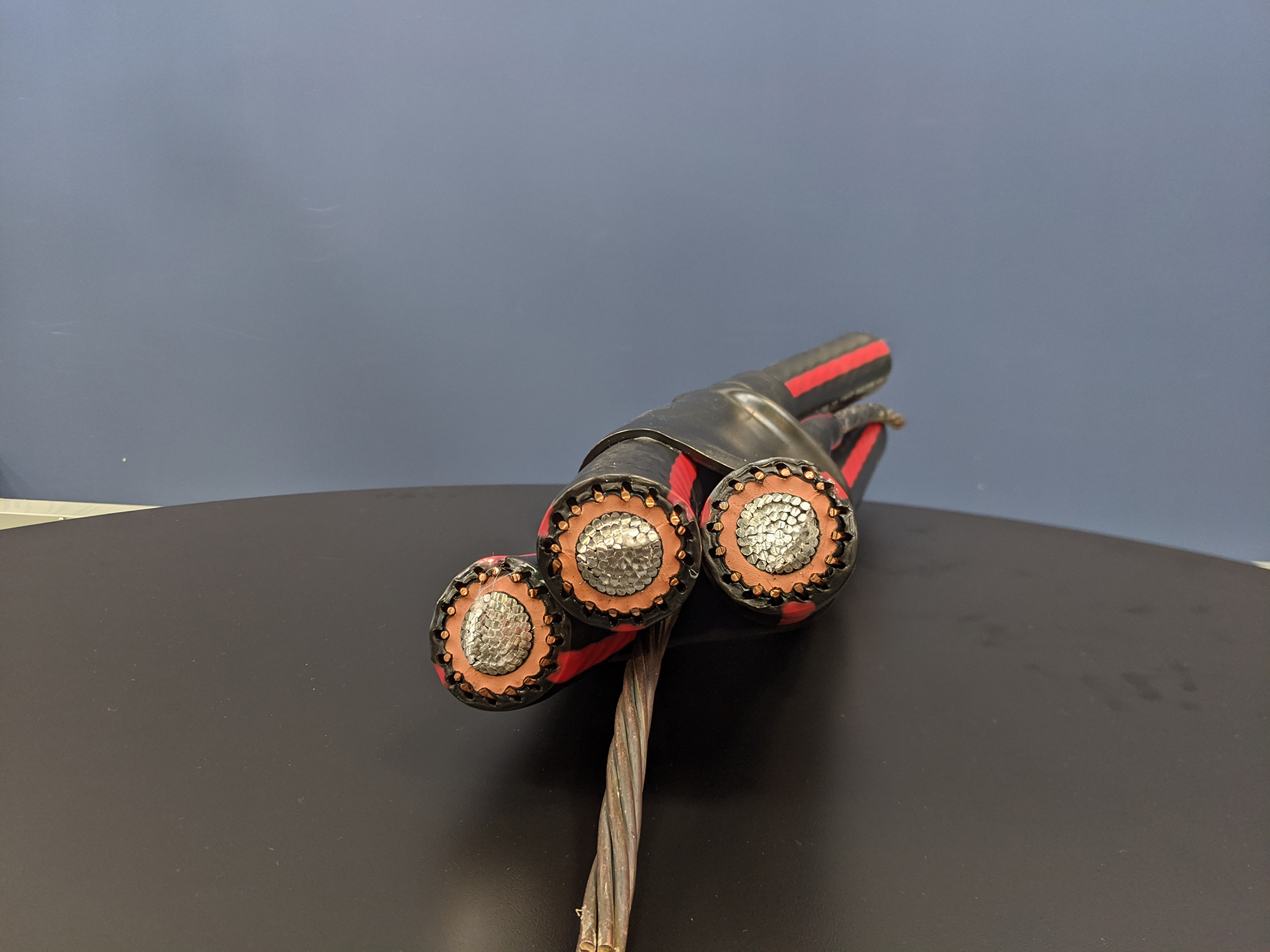
And be sure to share this educational series on Facebook and Twitter!

At One Energy, we believe a cheap investment will yield cheap results – and when it comes to the safety of our employees… cheap results are unacceptable.
Keeping employees safe means ensuring they are comfortable in and protected by the gear they wear and use while working. Sometimes that means spending extra money, which is more than worth it when preventing harm to our team.
Today’s Safety Minute covers One Energy’s ethos when equipping our team with top-of-the-line clothing and accessories, and shows examples of some of the items we believe are superior to their less-expensive counterparts.
Watch the video below, and be sure to subscribe to our YouTube channel so you don’t miss a future minute.

How does One Energy know what the wind’s like in a certain area, to help determine if it’s suitable for siting a turbine? This machine right here!
Today’s Wind View shows one of One Energy’s “LiDAR” units. That stands for “light detection and ranging,” which means these units use lasers to measure wind speeds! 📡
We place units at potential project sites, and use the data they collect over an extended period of time to help determine if the wind resource is optimal for a Wind for Industry project. 📊
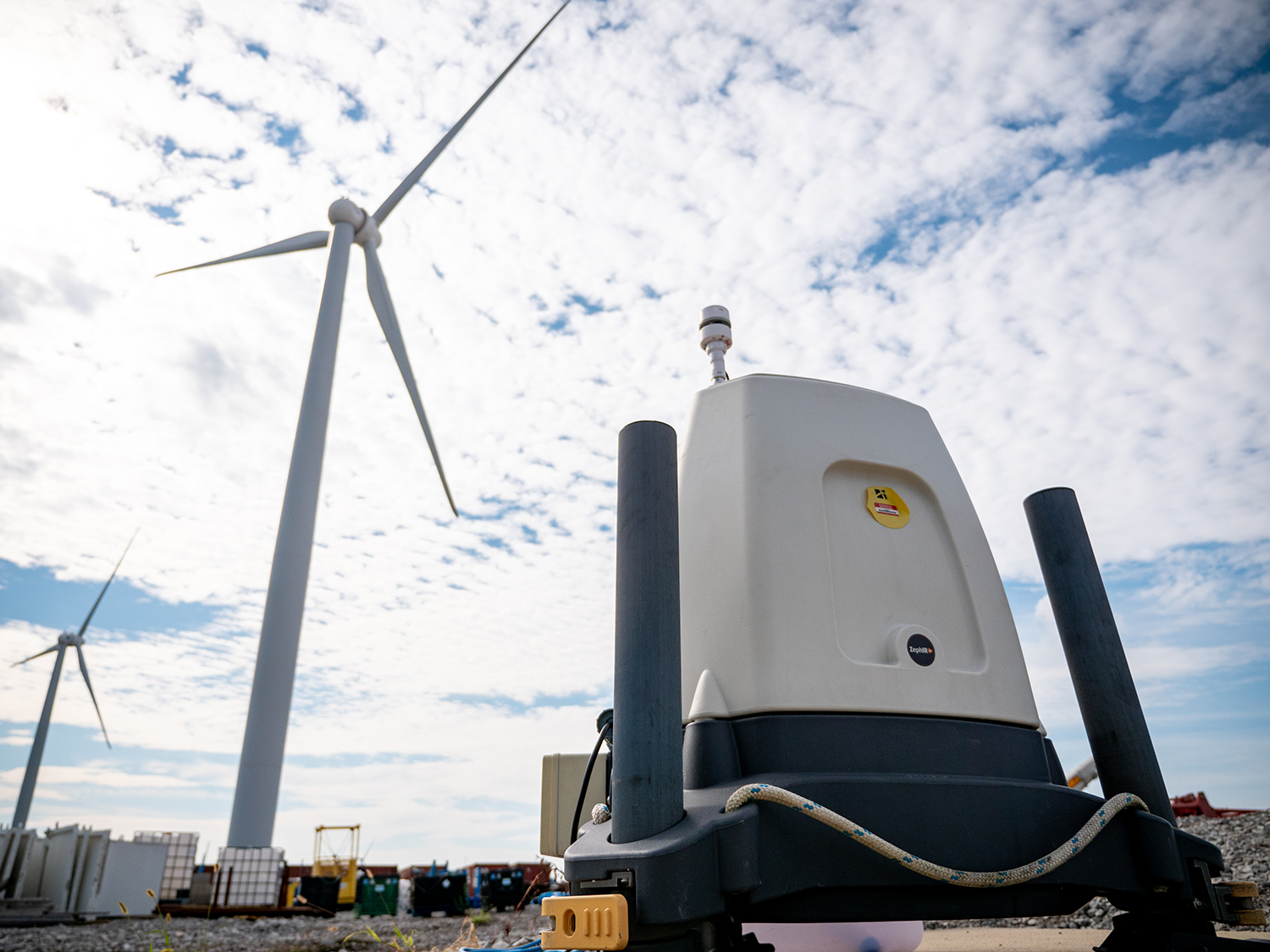

Answer time! Last week, we asked for your help equipping our drone pilots with enough battery power to inspect wind turbine blades and take cool aerial photographs, like the one below, which shows two turbines during construction, awaiting the “rotor” (blades + hub) to be attached via crane.
Think you solved the homework problems? Find out by downloading the answers here!
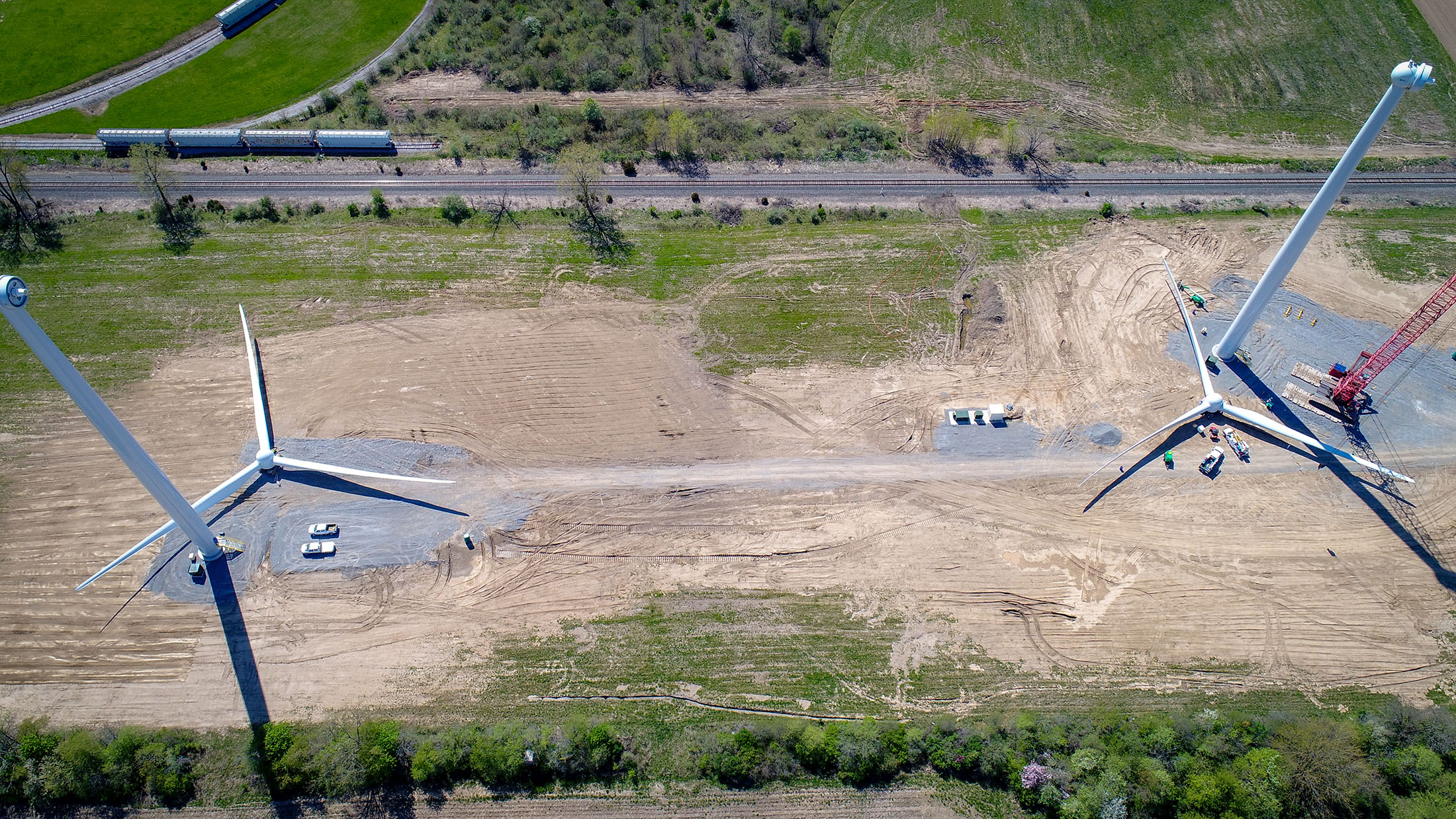
And be sure to share this educational series on Facebook and Twitter!

Chilly mornings at One Energy can be breathtaking – in more ways than one! 🌬️
📷 A One Energy employee snapped this photo on her way into work at the North Findlay Wind Campus one early morning recently.
Changing seasons create a variety of backdrops for the work we do at our corporate headquarters and project sites. And as temperatures drop, the morning fog on our retention ponds – paired with a beautiful sunrise silhouetting the wind turbines – makes for a stunning edition of Wind Views!
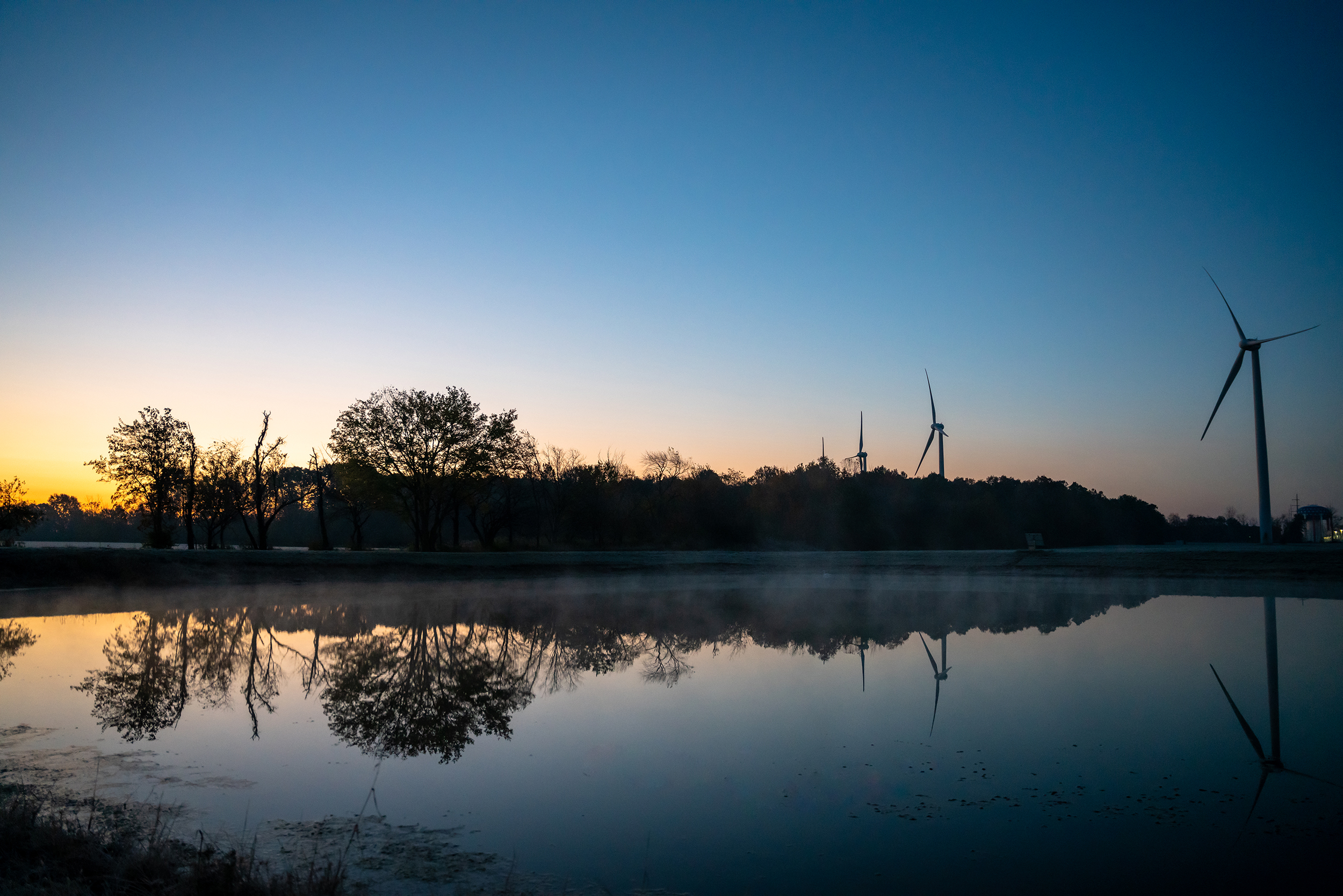

One Energy uses battery-powered drones for photographing projects and for monitoring the blade health of our wind turbines. This requires drone pilots to pay close attention to the battery life of our drones any time they’re used!
For today’s Wind Study, we need your help making sure we supply our drone pilots with enough battery power when inspecting turbine blades. You’ll have to consider things like wind speed and landing time to solve the problems in this week’s assignment!
Download the homework questions here and don’t forget to come back next Monday to check your answers!
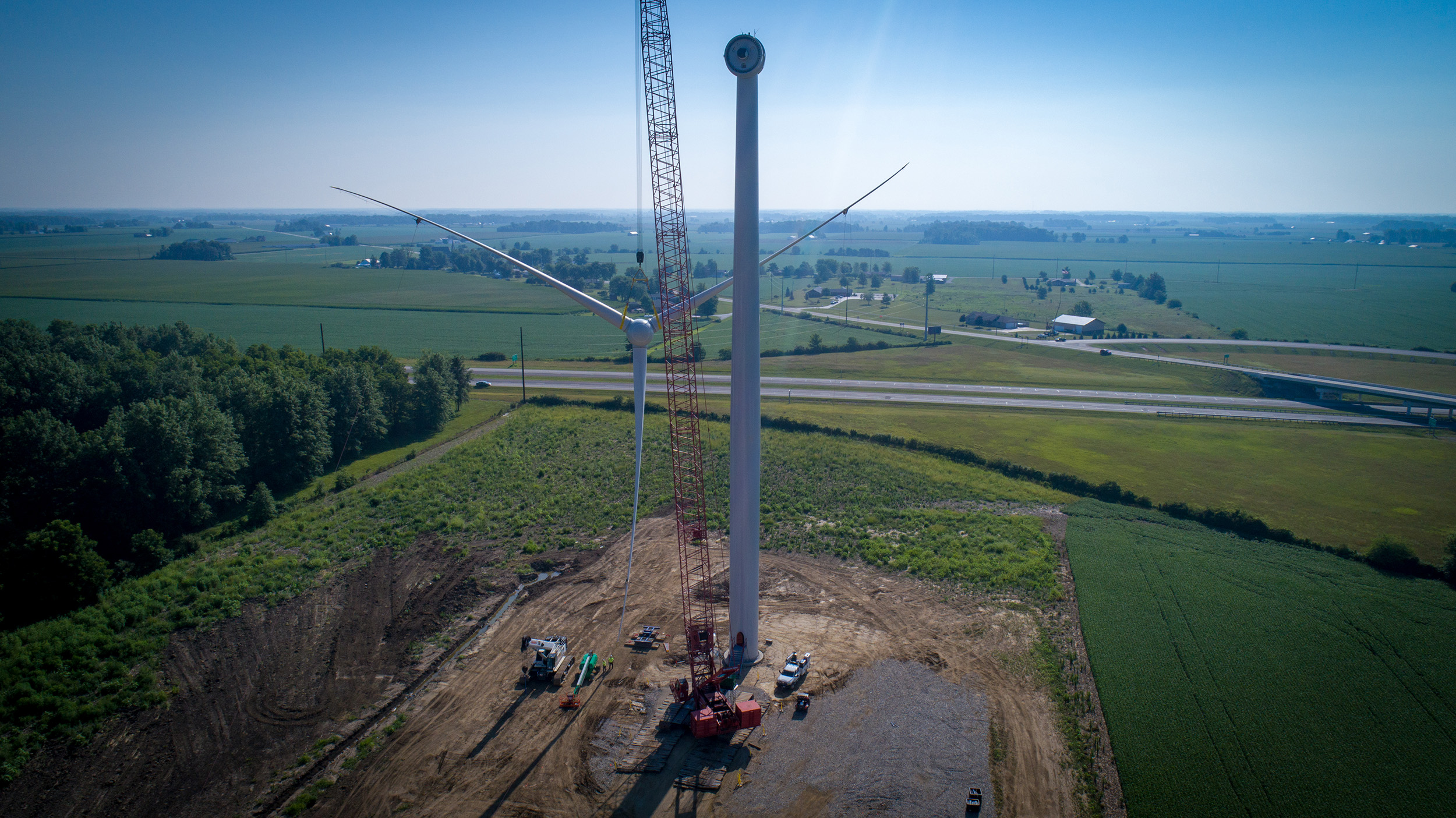
Be sure to share this educational series on Facebook and Twitter!



